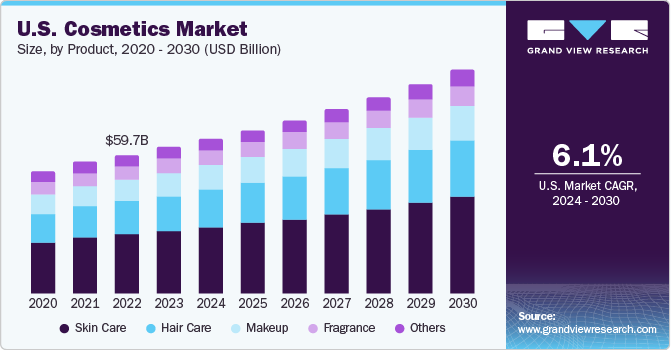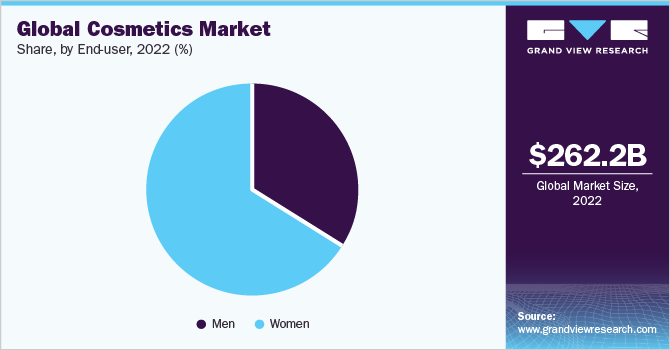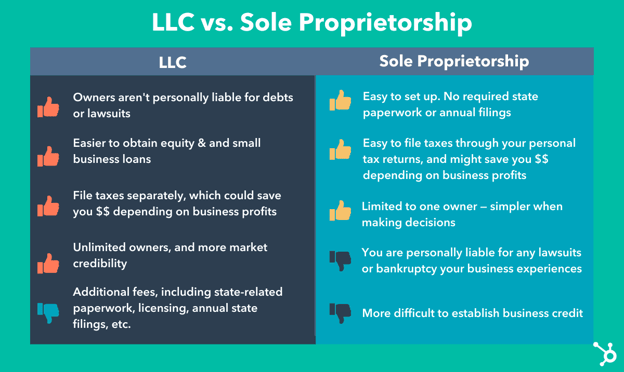The permanent makeup industry earned $1.5 billion in 2020. It is predicted to grow globally at 6.4% from 2021 to 2028. This ongoing growth creates a perfect time for newcomers to enter the microblading business.

The demand for permanent makeup applications like microblading for eyebrows, eyeliner tattoos, and lip blushing continues to rise. Opening your permanent makeup studio allows you to tap into this fast-growing industry while helping clients enhance their natural beauty.
This guide will walk you through how to start a permanent makeup business. From obtaining permanent makeup insurance to market research and competitive analysis, here’s everything to know about opening your own business in the beauty industry.
1. Conduct Permanent Makeup Market Research
Market research is important to the permanent makeup market. It offers insight into your target market, trends in permanent makeup techniques, top products, price points, and more. It also offers information on where to source a permanent makeup machine.

Some details you’ll learn through market research for your permanent makeup brand include:
- The permanent makeup industry falls under the growing broader tattoo industry which is expected to see significant growth over the coming years.
- Top services include permanent lip blush, lip liner, brow treatments (microblading session), and eyeliner.
- With an aging population increasingly seeking beauty procedures, demand for permanent makeup that enhances facial features like eyebrows, eyeliner, and lip color continues rising.
- Microblading alone is the fastest-growing permanent makeup service in the U.S.
- Home-based businesses make up over 50% of microblading service providers, signaling a lucrative opportunity for solo entrepreneurs.
- When conducting your location analysis, consider both your target client demographic as well as current competition levels and any state licensing requirements.
- Suburban areas offer affordability with a growing customer base as microblading and other permanent makeup services gain mainstream popularity across generations.
- Use Google Trends, Yelp business pages, and other sites to analyze interest over time and heat maps indicating demand density.
- Cross-reference search volume and review concentration with median incomes using tools like Esri’s Tapestry Segmentation datasets.
- Evaluating this geospatial data helps determine the best-fitting markets to launch and promote your permanent makeup studio.
As you refine your service offering, examine popular permanent makeup styles and new techniques gaining traction. For instance, “powder brows” and subtle lip blushing are rising to meet changing expectations while still appearing natural.
2. Analyze the Competition
When launching a permanent makeup studio, performing a competitive analysis is crucial for positioning yourself in your local market. To form a successful business, draw on the experience of businesses around you. Check out parallel markets like local hair salons and tattoo studios.
Start by using Google Maps to identify existing nearby permanent makeup businesses, including both brick-and-mortar shops and mobile providers operating out of their own homes. Search for key terms like “permanent makeup studio”, “microblading”, and even “tattoo” to build your competitive list.
Evaluating online competitors goes beyond typical service details to focus more on digital presence and visibility. Use Google Analytics tools to estimate their organic traffic and search engine ranking positions for relevant microblading and permanent makeup keywords.
Assess the quality and optimization of their website pages, blog content, and reviews/testimonials. Examine their social media follower counts on Instagram and Facebook along with engagement levels like shares and comments. A few posts make a big difference.
Combining offline observational data with online performance metrics provides a view of local permanent makeup competitor strengths. This granular competitive insight helps inform your own permanent makeup business’s specialties. Ongoing monitoring enables you to respond to industry shifts.
3. Costs to Start a Permanent Makeup Business
When launching a permanent makeup studio, your two primary start-up cost categories will be equipment/supplies and working capital. Having a thorough outline prepares you for obtaining quality insurance, marketing materials, and even a small business loan.
Some fluctuating and fixed costs you’ll encounter include:
Startup Costs
- Essential equipment like tattoo machines, needle cartridges, pigments, numbing cream, and disinfection systems. The average price is $3,000-$5,000 initially.
- Basic furniture like a technician stool, client bed or chair, workstation cart, ring lights, and magnifying glasses will add another $1,000 or so.
- Factor in $1,000-2,000 for small wares like ink caps, gloves, aprons, paper products, and sterile bandages/aftercare ointments.
- Working capital funds your rent, insurance, payroll, advertising, and other operating expenses during the crucial but cash-strapped first 6 months of opening before steady clientele is secured.
- While intrinsic talent plays a role, effective marketing fuels vital word-of-mouth referrals.
- Expect to allocate at least $2,500-$5,000 for digital, print, and neighborhood promotions to announce your new permanent makeup studio on platforms potential clients actively use.
Ongoing Costs
- Rent/mortgage payments vary widely based on studio size and location but may range from $800 per month for a home studio up to $4,000 for a retail space in a trendy downtown area.
- Liability insurance generally runs $600-$1,200 annually.
- Software subscriptions for client scheduling, invoicing, and marketing like Square Appointments and MailChimp cost around $100 total per month.
- Variable costs fluctuate directly in line with client volume. Inventory is chief among them, with per-service supplies and consumable equipment adding up quickly.
- Packaging daily appointments close together maximize these profit-eroding variable outlays.
- Labor via employee wages or independent contractor payouts also scales up directly with client demand.
Carefully track these metrics to develop a thorough budget as you become your own boss.
4. Form a Legal Business Entity
When establishing a permanent makeup business, protecting your assets with a formal business structure is crucial given the physical nature of services performed.

The four main options each have pros and cons to weigh regarding taxes, liability, and scalability below:
Sole Proprietorship
A sole proprietorship provides ease of setup with minimal registration paperwork and no separate business entity creation. However, you are personally liable for all studio debts, lawsuits, or claims, placing your home, bank accounts, investments, and other assets at risk without corporate protection.
Partnership
General and limited partnerships allow combining resources and expertise with one or more co-owners under a shared leadership structure. However, similar to sole proprietorships, individual partners still assume unlimited personal liability for the full breadth of studio liabilities.
Limited Liability Company (LLC)
Forming an LLC protects your assets by legally separating finances from those of the business. An LLC limits owner liability to their invested capital without jeopardizing other current or future assets. The relatively few formalities and flexible management options retain partnerships’ ease for microbusiness scales.
Corporation
“C corporations” and “S corporations” enable selling stocks publicly or privately while restricting financial liability. Extensive corporate formalities and higher state fees add unnecessary complexities for an intimate micro business like a permanent makeup studio.
5. Register Your Business For Taxes
Before accepting any payments from clients, your permanent makeup business must be registered for federal and state tax purposes. The primary registration is applying for an Employer Identification Number (EIN) which serves as your business’s official tax ID.
Unlike using your Social Security Number, an EIN keeps your business and personal finances separate while enabling important capabilities like opening business bank accounts, hiring employees, and completing state registrations.
Applying for an EIN is free and fast directly through the IRS website with instant validation.
The online assistant asks basic questions about your business structure, ownership details, and contact information before issuing your permanent makeup studio’s unique 9-digit EIN.
With your new EIN in hand, visit your state’s business tax site to register for applicable sales, use, or gross receipts taxes associated with selling permanent makeup services. These requirements and rates vary by location, though costs are typically minor.
Completing these registrations upfront prevents tax compliance headaches down the road while legitimizing your business in the eyes of both financial institutions and potential clients. Display your EIN, sales tax ID, and business licenses prominently on your website.
6. Setup Your Accounting
Proper financial tracking is imperative for a permanent makeup studio to calculate profitability and prepare taxes. There are many ways to streamline accounting, including:
Open a Business Bank Account
Begin by separating business finances from personal bank accounts and credit cards. Apply for a free business checking account using your EIN and connect integrated accounting software like for automated tracking.
Accounting Software
Cloud-based solutions like QuickBooks seamlessly sync with bank/credit card accounts to import all permanent makeup studio transactions. Powerful reporting provides real-time revenue, cost of goods sold, variable margins per service, and accounts receivable/payable.
Hire an Accountant
Partnering with an accountant provides expert guidance tailoring the software’s capabilities to your permanent makeup operations. A certified accountant can customize tracking to your specific cost drivers for precise budgeting insights.
Apply for a Business Credit Card
Obtaining a dedicated business credit card also simplifies accounting by separating permanent makeup expenditures from your finances. Business cards weigh factors like your LLC’s age and revenue instead of your credit score for higher limits to fund larger upfront supply orders.
7. Obtain Licenses and Permits
Before taking on any permanent makeup clients, your studio must obtain a permanent makeup license and any other relevant credentials. Find federal license information through the U.S. Small Business Administration. The SBA also offers a local search tool for state and city requirements.
Most states mandate a professional license specifying accredited training programs that instruct on cosmetic tattoo best practices for client safety. For example, Alaska requires a two-year apprenticeship under a licensed technician. Louisiana issues a “Body Art” permit only to artists passing bloodborne pathogen courses.
States administering sales tax on service businesses require a seller’s or resale certificate/permit tied to your studio’s physical address This confirms registering for tax collection responsibility discussed in Section 5.
Beyond tax compliance, many cities and counties force all commercial enterprises to register for an annual business or occupation license to operate within their jurisdictions. These confirm zoning allowances and completion of any supplemental location-based requirements around topics like public health.
8. Get Business Insurance
Carrying adequate business insurance is a big part of a good business plan. It protects your microblading business from financial ruin in the event of property damage, customer injury lawsuits, employee claims, and liability claims. Without coverage, a risk could instantly bankrupt your studio.
For example, in the PMU world, the following issues could bankrupt the right location:
- A pigment spill from a tipped-over inkwell could ruin your trabalho flooring and require expensive mitigation.
- An elderly customer could trip on a tech’s dropped syringe and break their hip, suing for $100,000+ in medical bills.
- You could even face allegations of permanent disfigurement from a botched microblading procedure.
The right insurance defends and covers judgments for scenarios like these.
Obtaining coverage involves:
- Researching top-rated providers like The Hartford with industry experience.
- Selecting applicable liability, property, commercial auto, workers comp (if hiring), and umbrella insurance types at desired amounts after assessing studio vulnerabilities.
- Completing applications detailing your permanent makeup business operations, locations, payroll, revenues, ownership structure, etc. for carrier quotes.
- Paying premiums monthly, quarterly, or annually once bound.
Premium amounts depend on revenue, location, claims history, deductible level selected, and other underwriting criteria.
9. Create an Office Space
Establishing a professional permanent makeup studio space lends credibility while providing a safe, comfortable environment for clients to receive semi-permanent pigmentation services. The optimal setting balances affordability, cleanliness, privacy, and accessibility.
Retail Office
For higher volume, locating your permanent makeup studio in a retail setting like a salon or spa can enable sharing reception staff and clustering complementary services. Renting a single room in a local establishment starts at around $800 per month.
Coworking Space
To cultivate community while avoiding the risk of a long-term lease, WeWork locations offer move-in ready studios for freelancers and microbusinesses on flexible month-to-month terms. Membership tiers determine room access, parking options, conference room credits, networking events, and amenities.
10. Source Your Equipment
Launching a permanent makeup studio and microblading business requires several thousand dollars worth of basic equipment. Explore these sourcing strategies when equipping your tattoo studio and honing your PMU techniques:
Buy New
Ordering straight from medical or tattoo equipment suppliers like Monster Steel and Dragonhawk ensures factory testing for electrical safety and hygiene. Invest in quality machines like adjustable Cheyenne Hawk pneumatic tattoo pens for brow tinting and other PMU artist services.
Buy Used
Sellers on Facebook Marketplace and Craigslist list quality refurbished items at 40-60% discounts. Inspect carefully for damage and replace common parts like grommets, grips, power cords, and clip cord sleeves if worn.
Rent
Avoid major capital outlays by renting permanent makeup gear as needed instead of owning it. Rental centers like Fat Llama offer tattoo machines and makeup airbrush kit rentals. They handle equipment maintenance/transportation, though more commercial renters may require hefty insurance policies.
Lease
Leasing through specialty financiers gives access to thousands of high-end equipment while building business credit. For instance, equipment financing offers 24-36 month tattoo machine leases at competitive rates.
11. Establish Your Brand Assets
Crafting a recognizable brand identity helps a permanent makeup studio stand out while conveying professionalism and trustworthiness to prospective clients. Essential brand assets requiring investment include:
Getting A Business Phone Number
Purchasing a dedicated business phone number lends legitimacy to client bookings and provider communications. Cloud-based virtual phone services like RingCentral offer customizable call routing to ring multiple devices, HD voice call quality, and vanity numbers.
Creating A Logo and Brand Assets
A polished logo visually encapsulates a permanent makeup studio’s personality and specialties for memorable impact. Commission a digital design from logo makers like Looka that provides full commercial rights from $20.
Creating Business Cards and Signage
Well-designed Vistaprint business cards lend convenient credibility during client meetings or when networking with local beauty-related businesses. Expect to pay $20-40 for 250-500 cards on quality cardstock showcasing the studio logo, motto, contact info, license details, and social links.
Purchasing A Domain Name
Secure a permanent makeup business website domain with niche keywords like MicropigmentationStudioBoston.com from registrars like Namecheap for $8-$15 per year. Aim for short, simple, easy-to-spell names with target geo-modifiers.
Building A Website
Well-designed websites establish trust by showcasing licensing, a portfolio, and service details. Those lacking web design expertise can leverage intuitive website builders like Wix for drag-and-drop layouts. Hire web developers on marketplaces like Fiverr to custom code sites.
12. Join Associations and Groups
Plugging into industry groups and associations both locally and virtually enables collaboration, mentorship, technique refinement, and lead sharing between fellow permanent makeup artists and business owners.
Local Associations
The Association of Professional Piercers provides seminars, webinars, and disaster relief grants for properly accredited permanent makeup technicians. Browse listings through the Alliance of Professional Tattooists to uncover state or regional groups.
Local Meetups
Discovering relevant conferences, trade shows, networking happy hours, apparel markets, and continuing education expos means monitoring sites like Meetup routinely for freshly announced beauty and wellness industry events within 50 miles.
Facebook Groups
The largest online communities exist within private industry Facebook Groups. Crowdsource answers for permanent makeup challenges from tens of thousands of peers globally. For instance, join PMU Secrets! – Permanent Makeup & Microblading Family for job lead sharing and client consent advice.
13. How to Market a Permanent Makeup Business
Implementing an integrated marketing strategy helps retain current clients and find future clients. While referral partnerships hold the most potential long-term, several effective options exist for discovery and conversions if executed thoughtfully. Some ways of creating in-person and online traffic include:
Personal Networking
As you launch your dream career, tapping into your social network provides a captive seed audience to vet services and spread organic word-of-mouth endorsements. Offer friends/family discount codes in exchange for tagged posts and commitments to bring several acquaintances for bookings.
Digital Marketing
- Create Google/Bing paid ads geo-targeting nearby high-income neighborhoods where permanent makeup interest is highest according to Google Trends. Link directly to online booking.
- Promote curated social posts showcasing your custom permanent makeup portfolio into targeted Instagram and Facebook feeds via intuitive ad managers.
- Upload educational microblading care or trend videos to YouTube and embed them onsite to boost authority and conversions.
- Guest blog for beauty blogs sharing permanent makeup artist tips for backlinks driving SEO rankings and referral traffic.
- Create an email signup pop-up offering new subscriber promo codes for 10% off their first color service.
Traditional Marketing
- Design direct mail postcards with compelling permanent makeup before-and-after photos to mail to households within a 10-mile radius.
- Place eye-catching local newspaper ads in lifestyle and beauty sections announcing grand opening deals.
- Print trifold brochures about expert micro shading techniques for distribution at nearby hair and nail salons.
- Sponsor community event booths to meet residents face-to-face and book live demos.
- Provide studio tours showcasing credentials and amenities to event planners and wedding coordinators for partnership opportunities.
Executing across both digital and traditional channels maximizes customers from multiple generations. This helps a permanent makeup artist develop brand recognition and loyalty.
14. Focus on the Customer
Providing an exceptional client experience drives loyalty, referrals, and repeat bookings for permanent makeup artists. Given the intimate nature of semi-permanent tattooing on faces, sensitivity and care throughout the process earn trust and positive word-of-mouth above all else.

Begin with the consultation, allowing ample time for a new client to convey subtle aesthetic preferences. Explain realistic outcomes tailored to their facial structure.
During the appointment, soothe nerves by walking through each step before touching the tattoo machine and checking comfort levels frequently. Accommodate last-minute brow shape tweaks or breaks as needed.
Book complimentary touch-ups for any unevenness once the initial swelling subsides. Client relations is a big part of providing excellent service within your business plan.
